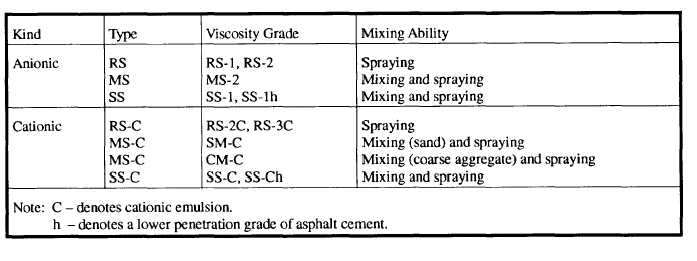Table 8-4.-Asphalt Emulsions According to Their Electric Charge
Grades of Asphalt Cutbacks
When a great amount of cutterstock is added to a
given amount of asphalt cement, a very thin liquid
results. Viscosity grade is a measure of the relative
consistency of an asphalt bitumen after cutterstock is
added to a fixed amount of it. The grade is designated
by a number that corresponds to the lower limit of the
viscosity of asphalt cutback as determined by a standard
test. The upper limit of viscosity is defined as twice the
lower limit.
The viscosity grades of RC, MC, and SC are 70
(70-140), 250 (250-500), 800 (800-1,600), and 3,000
(3,000-6,000). The numbers in parenthesis are the lower
and upper limits of viscosity, In addition, MC has a grade
30(30-60). The grade ranges are 30 (most fluid) to 3,000
(least fluid).
Uses of Asphalt Cutbacks
Different types and grades of asphalt cutbacks are
used to meet various climate conditions for different
types of pavement. Asphalt cutbacks are usually used
for prime/tackcoats and for bituminous surface
treatments. The prevailing atmospheric temperatures
existing during construction projects are a major factor
in selecting the grade of asphalt cutback. The heavier
grades are preferred for use in warm weather; the lighter
grades in cool weather. When the preferred grade of a
given type of asphalt cutback is not available, a
comparable grade of another type may be substituted;
for example, RC-800 maybe used instead of MC-800,
or RC-70 instead of MC-70, without seriously affecting
the finished pavement.
Light grades of asphalt cutback maybe produced in
the field by adding solvents to asphalt cutback. The
composition of asphalt cutbacks, expressed in percent
of total volume, is shown in table 8-3.
Asphalt Emulsions
An asphalt emulsion is a nonflammable liquid
substance, composed of asphalt cement, water, and an
emulsifier mixed together to produce a liquid material.
Emulsions are environmentally friendly, have the same
basic uses as cutbacks and are becoming more
commonly used in the field. Asphalt and water will not
mix; therefore, a chemical agent called an “emulsifying
agent” must be added. The emulsifying agent keeps the
asphalt cement suspended in the water and controls
certain physical properties of the emulsion. Common
emulsifying agents are soaps, animal blood chemicals,
and certain specified colloidal clays in dust. When
emulsion is applied to a surface, the water and asphalt
cement break (separate), leaving a thin film of asphalt
cement.
The speed of separation, referred to as setting rate,
is the basis for designating an asphalt emulsion. The
setting rates are rapid, medium, and slow. The letter
symbols for these rates are RS, MS, and SS,
respectively.
Asphalt emulsions are classified into two types:
those that are negatively charged and those that are
positively charged (table 8-4), Emulsified asphalts may
be of either the anionic electro (negatively) charged
asphalt globules or cationic electro (positive) charged
asphalt globules. The asphalt emulsions are graded on
the basis of viscosity and grouped according to their use.
8-21

